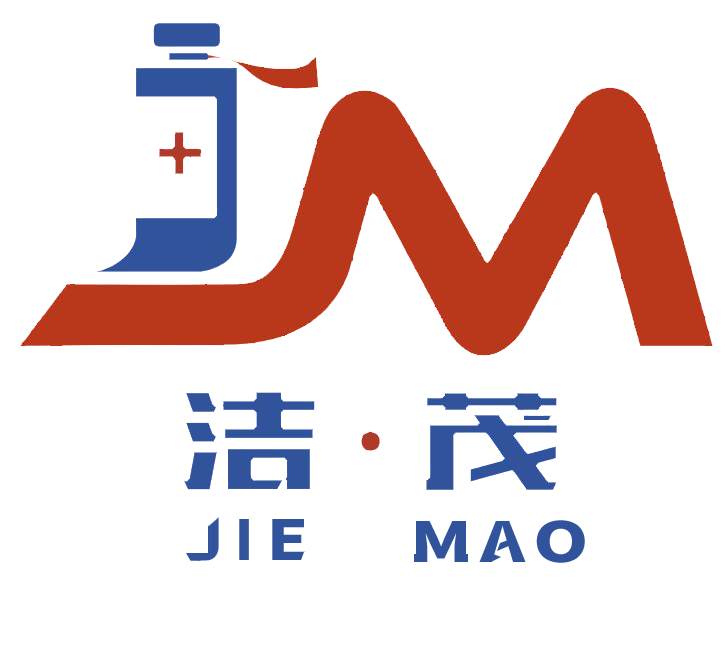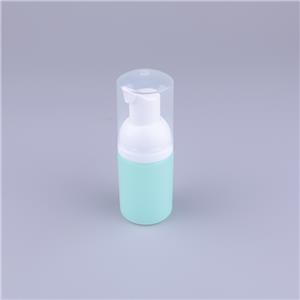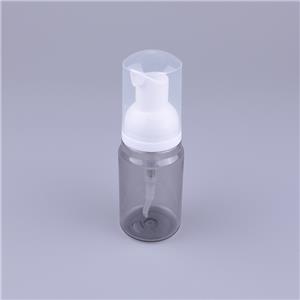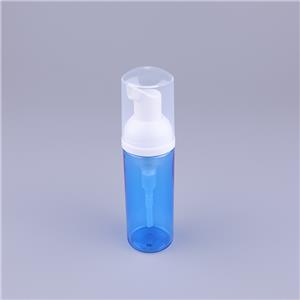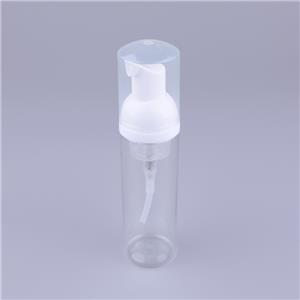- Home
- >
- News
- >
- Public Information
- >
- Engineering Plastics Products: High-Performance Material Solutions for Industrial Manufacturing
Engineering Plastics Products: High-Performance Material Solutions for Industrial Manufacturing
Engineering Plastic Products: High Performance Material Solutions for Industrial Manufacturing
Engineering plastic products are various structural and functional components made from polymer materials with excellent mechanical properties, heat resistance, and chemical resistance through precision molding processes. They are widely used in high-end manufacturing fields such as automobiles, electronics, and aerospace. Compared with general plastics, engineering plastic products can maintain stable performance in harsh environments such as high temperature, high pressure, and chemical corrosion for a long time, and are the core materials for achieving equipment lightweighting, functional integration, and manufacturing precision. With the advancement of material modification technology and molding processes, engineering plastic products are gradually replacing traditional materials such as metals and ceramics, promoting the upgrading of industrial manufacturing towards high efficiency, energy conservation, and environmental protection.
1、 Core characteristics and technical indicators of engineering plastic products
The "engineering" characteristics of engineering plastic products are reflected in their ability to exceed the performance boundaries of general plastics, meet strict requirements such as structural load-bearing, environmental resistance, and precision fit, and the core technical indicators constitute the key threshold for product application.
Industrial grade standards for mechanical properties
The mechanical properties of engineering plastic products are significantly better than general plastics, with tensile strength generally ranging from 60-150MPa (general plastics are mostly 20-50MPa) and bending modulus reaching 2000-10000MPa, which can withstand long-term static loads or dynamic fatigue stress. Taking the automobile engine bracket as an example, the product made of glass fiber reinforced PA66 has a tensile strength of 120MPa and a fatigue life of over 10 cycles, completely replacing traditional cast iron parts.
Impact toughness is a prominent advantage of engineering plastic products, with a notch impact strength typically ranging from 20-100kJ/m ². Some ultra tough varieties (such as PC/ABS alloys) can reach 50-80kJ/m ², and can still maintain an impact value of over 70% at -40 ℃, far superior to the low-temperature brittleness of metals. This characteristic makes it irreplaceable in impact resistant components such as car bumpers and electronic device casings.
Heat resistance and environmental adaptability
The continuous use temperature of engineering plastic products is generally between 100-250 ℃, much higher than the 60-80 ℃ of general plastics: PA66 can work for a long time at 120 ℃, PBT can reach 140 ℃, and PEEK can reach up to 260 ℃. The heat distortion temperature (HDT, 1.82MPa) is a key indicator, and the HDT of reinforced and modified engineering plastics is mostly above 150 ℃. For example, the HDT of glass fiber reinforced PBT can reach 210 ℃, which can meet the high temperature environment requirements of automotive engine compartments.
Chemical corrosion resistance is the core ability of engineering plastic products to adapt to complex working conditions: PTFE (polytetrafluoroethylene) is inert to almost all chemical reagents and can be used to make pipelines for transporting highly corrosive media; PPS (polyphenylene sulfide) is resistant to acid, alkali, and organic solvents, suitable for chemical equipment components; PA6 has excellent oil resistance and is an ideal material for gearbox gears.
Dimensional stability and precision formability
The molding shrinkage rate of engineering plastic products is low (0.2% -0.8%), the coefficient of linear expansion is small (2-8 × 10 ⁻⁵/℃), and the size fluctuation is small under temperature and humidity changes. For example, the dimensional tolerance of LCP (liquid crystal polymer) products can be controlled within ± 0.005mm, meeting the precision assembly requirements of 5G antennas; POM (polyoxymethylene) has a friction coefficient as low as 0.04, excellent wear resistance, and the gear transmission accuracy made of it reaches ISO level 5 standard.
2、 Mainstream engineering plastic product categories and performance differences
Engineering plastic products can be divided into two categories based on raw materials: general engineering plastics and special engineering plastics. The former is represented by PA, PC, POM, PBT, PPO, while the latter includes PEEK, PPS, PI, LCP, etc., each forming a differentiated application field.
General Engineering Plastic Products
Polyamide (PA, Nylon): PA6 and PA66 are the most commonly used varieties. PA66 has a tensile strength of 80-90MPa and an HDT of 70-80 ℃. After being reinforced with 30% glass fiber, the tensile strength is increased to 150MPa and the HDT reaches 250 ℃. PA products have excellent oil resistance and self-lubricating properties, and are widely used in automotive oil pipelines, gears, and electronic connectors. The global annual consumption exceeds 3 million tons.
Polycarbonate (PC): Light transmittance of 89% -90%, impact strength of 60-80 kJ/m ², HDT of 130-140 ℃, is the benchmark for transparent engineering plastics. PC products such as car headlights, baby bottles, and bulletproof glass have both transparency and impact resistance, but have poor chemical resistance and are easily corroded by organic solvents.
Polyoxymethylene (POM): with a crystallinity of up to 75% -85%, a tensile strength of 60-70MPa, a friction coefficient of 0.04-0.06, and excellent fatigue resistance (with a strength retention rate of 70% after 10 cycles). POM products such as gears, bearings, and zippers are the preferred materials for mechanical transmission components, commonly known as "Saigang".
Polybutylene terephthalate (PBT): excellent electrical insulation (volume resistivity 10 ¹⁴Ω· cm), HDT 210-220 ℃ (enhanced grade), suitable for making electronic and electrical components. PBT products such as connectors, coil frames, and switches account for over 20% of the engineering plastic usage in the electronic field.
Polyphenylene oxide (PPO): Pure PPO is difficult to process, often blended with PS (MPPO), HDT 120-170 ℃, low dielectric constant (3.0-3.2), suitable for high-frequency electronic components. MPPO products such as radar covers and microwave oven casings maintain stable electrical performance even in humid environments.
Special engineering plastic products
Polyphenylene sulfide (PPS): Continuous use temperature of 200-220 ℃, flame retardancy up to UL94 V0 level, chemical resistance close to PTFE. PPS products such as automotive exhaust pipe insulation and electronic welding carriers can withstand short-term high temperatures of 260 ℃ (such as wave soldering).
Polyether ether ketone (PEEK): a special engineering plastic with the best comprehensive performance, tensile strength of 90-100MPa, HDT 315 ℃, continuous use temperature of 260 ℃, and biocompatibility (ISO 10993). PEEK products such as aerospace structural components, medical implant devices, and deep-sea cable insulation layers have a unit price of up to 800-1000 yuan/kg
Polyimide (PI): the king of temperature resistance, with stable performance in the temperature range of 260-300 ℃ and -269 ℃ to 300 ℃ for long-term use. It is resistant to radiation and aging. PI products such as spacecraft thermal protection layers and nuclear industry cables are difficult to process and costly (1000-2000 yuan/kg).
Liquid crystal polymer (LCP): In a molten state, it is in the liquid crystal phase, with a molding shrinkage rate of<0.1% and a linear expansion coefficient of 1-3 × 10 ⁻⁶/℃, suitable for ultra precision components. LCP products such as 5G antennas and chip packaging carriers can meet size accuracy requirements of 0.01mm level.
3、 Processing technology and quality control
The processing of engineering plastic products needs to match their high-performance characteristics, with more complex molding processes and higher requirements for equipment accuracy and parameter control. The core processes include injection molding, extrusion, molding, etc., supplemented by precision post-processing technology.
Precision injection molding
Injection molding is the main processing method for engineering plastic products, accounting for over 60% of the total output. Key technologies include:
High temperature plasticization: Engineering plastics have high melting temperatures (PA66 260-280 ℃, PEEK 380-400 ℃), requiring the use of high-temperature resistant material barrels (nickel based alloy materials) and precision temperature control systems (temperature difference ± 1 ℃).
High pressure injection: Reinforced engineering plastics have high melt viscosity and require injection pressure of 150-250MPa (general plastics only 50-100MPa), equipped with a servo hydraulic system to ensure pressure stability.
Precision pressure holding: The holding pressure is 70% -90% of the injection pressure, and the holding time is dynamically adjusted according to the wall thickness (1-10 seconds) to reduce warping deformation caused by internal stress.
Mold temperature control: Using an oil temperature machine to accurately control the mold temperature (60-120 ℃), ensuring that crystalline engineering plastics (such as PA, POM) form a complete crystal structure and improve mechanical properties.
High end engineering plastic injection molding requires an online quality monitoring system, which detects the viscosity of the melt in real time through infrared sensors and automatically adjusts process parameters through AI algorithms. The scrap rate can be controlled below 0.5%.
Other molding processes
Extrusion molding: used for pipes, plates, and profiles such as PA oil pipes, PC boards, and POM rods. The key is to control the screw compression ratio (3-5:1) and extrusion speed (5-20m/min) to ensure uniform plasticization of the melt.
Compression molding: Suitable for thermosetting engineering plastics (such as phenolic resins) and high viscosity specialty plastics (such as PI), the material is cured and formed by pressing (10-50MPa) and heating (150-300 ℃), resulting in high product strength but low production efficiency.
3D printing: Using engineering plastic wires or powders, complex structural components such as PEEK orthopedic implants and PA66 automotive prototypes are produced through fused deposition modeling (FDM) or selective laser sintering (SLS), suitable for small-scale customized production.
Post processing technology
Engineering plastic products often require post-treatment to improve performance:
Annealing treatment: PA products are kept in an oven at 120-150 ℃ for 2-4 hours to eliminate internal stress and improve dimensional stability by 30%.
Surface treatment: PC coating enhances wear resistance, POM electrical discharge machining forms a wear-resistant layer, and PA electroplating achieves a metallic texture.
Precision machining: Components that require extremely high dimensional accuracy, such as LCP connectors, need to be further machined through CNC milling with tolerances controlled within ± 0.001mm
4、 Application Fields and Typical Product Cases
Engineering plastic products have penetrated into various core areas of the national economy, playing an irreplaceable role in reducing weight, improving performance, and lowering costs. The following are typical cases of several key application areas.
Automotive Industry: Lightweight and Energy Conservation and Emission Reduction
The amount of engineering plastic used in each car reaches 30-50kg, accounting for 30% -40% of the total plastic usage in the vehicle, and is the core material for lightweight:
Power system: The engine oil pan is made of PA66+30% GF, which is 60% lighter in weight than cast iron parts and has a temperature resistance of over 150 ℃; PPS intake manifold is resistant to engine exhaust gas corrosion and has a lifespan of up to 100000 kilometers.
Transmission system: POM gears replace metal gears, reducing noise by 10-15 decibels and improving wear resistance by 50%; The PA66 bearing cage has good self-lubricating properties and an extended maintenance free period of up to 80000 kilometers.
Chassis system: Shock absorber end caps made of PC/ABS alloy, impact resistant and lightweight; PA6 oil pipe is resistant to high pressure (10MPa) and oil temperature (120 ℃), replacing rubber pipes to reduce the risk of leakage.
The promotion of new energy vehicles is accelerating the application of engineering plastics. The battery casing is made of flame-retardant PA66, which has both insulation properties (volume resistivity>10 ¹⁴Ω· cm) and impact resistance, and is 40% lighter in weight than aluminum alloy casings.
Electronics and 3C Industry: Precision and Integration
Consumer electronics: PC/ABS alloy phone frame, with drop resistance meeting 1.5m drop test, and the surface can achieve seamless connection between nano injection molding (NMT) and metal frame; LCP 5G antenna with stable dielectric constant (3.0 ± 0.1), suitable for high-frequency signal transmission.
Home appliances: air conditioning compressor terminal block made of PBT+30% GF, with temperature resistance of 150 ℃ and excellent insulation performance; PPO microwave oven shell, low dielectric loss (<0.002), suitable for microwave environment.
Industrial electronics: PI film as a flexible circuit board substrate, resistant to soldering temperature of 280 ℃; PPS connectors maintain stable electrical performance in humid and hot environments (85 ℃/85% RH).
Aerospace and high-end equipment
Aviation field: PEEK cabin interior parts, 30% lighter than aluminum alloy, resistant to aviation kerosene corrosion; The insulation layer of PI cable maintains elasticity at -55 ℃ to 150 ℃, suitable for cabin wiring.
Aerospace field: PI honeycomb structure material is used for satellite solar wing substrates, with a surface density of only 200-300g/m ² and high temperature radiation resistance; PEEK bolts replace titanium alloy, reducing weight by 40% and resistant to space atomic oxygen corrosion.
High end equipment: PTFE sealing ring is used for ultra-high pressure hydraulic systems (300MPa), with a friction coefficient of 0.02; PPS pump impellers transport strong acid media and have a lifespan five times that of stainless steel.
Medical and health field
Medical equipment: The shell of the PC infusion pump is transparent and impact resistant; PEEK orthopedic implants (such as artificial joints) have a bone density similar to that of the human body (1.3-1.4g/cm ³), and there is no rejection reaction.
Consumables and packaging: PBT syringe push rod, with good rigidity and resistance to drug corrosion; PP copolymer infusion bag, resistant to low-temperature sterilization (-40 ℃ freeze-drying).
Rehabilitation equipment: PA66 wheelchair frame, with strength close to steel but 50% lighter in weight; PC walking aid armrest, non slip and resistant to UV aging.
5、 Development Trends and Technological Innovation
Engineering plastic products are developing towards high performance, functional integration, and green direction, with material modification, process innovation, and recycling technology being the three core innovation areas.
High performance and functional integration
Nanocomposite modification: Adding nano fillers such as graphene and carbon nanotubes can increase the tensile strength of PA6 by 50% and the thermal conductivity by 3-5 times, which is used for LED heat dissipation components.
Alloying technology: PC/ABS alloy combines the impact resistance of PC with the processability of ABS, accounting for 60% of the engineering plastic alloy market; PA/PPO alloy enhances water resistance and is used for structural components in humid environments.
Function integration: Develop antibacterial engineering plastics (with added silver ions) with a killing rate of over 99% against Escherichia coli, for use in medical devices; Self repairing POM can repair scratches within 1 hour at 60 ℃ through microcapsule technology.
Greening and Circular Economy
Biobased engineering plastics: Biobased PA56 (raw material from castor oil) has properties similar to PA66, reduces carbon footprint by 60%, and has been used in automotive door panels; Biobased PC (made from isosorbide) has a light transmittance of 85% and is gradually replacing petroleum based PC
Chemical recycling technology: Waste PA6 is converted into caprolactam monomer through depolymerization reaction, with a purity of 99.9%. After re polymerization, the performance is consistent with the original raw material, and the closed-loop recycling cost is reduced to 80% of the original raw material.
Lightweight design: Through topology optimization and structural simulation, the wall thickness of engineering plastic products is reduced by 10% -20%. For example, the car dashboard bracket adopts a lattice structure, reducing weight by 30% while maintaining strength.
Intelligent Manufacturing and Process Innovation
Digital twin technology: Build a virtual production model for engineering plastic products, simulate the performance of different raw materials and process parameters, and shorten the development cycle of new products by 50%.
Precision molding equipment: The servo injection molding machine boasts a repeatability accuracy of ±0.1%, coupled with in-mold sensors for real-time parameter adjustment, ensuring that the dimensional tolerance of LCP connectors is less than 0.005mm
Additive manufacturing applications: PEEK 3D printing enables personalized medical implants, while PA12 powder sintering produces complex structural aviation components, with material utilization rates increasing from 60% in traditional processes to 95%
Engineering plastic products, as the "MSG" of industrial manufacturing, directly drive the upgrading of the equipment manufacturing industry through their performance enhancement and application expansion. From lightweighting of automobiles to 5G communication, from aerospace to medical health, engineering plastic products are leveraging their unique material advantages to overcome technical bottlenecks that traditional materials struggle with. In the future, with the increasing demand for sustainable development and the deepening of technological innovation, engineering plastic products will continue to make breakthroughs on the path of high performance, low energy consumption, and recyclability, becoming the core material system supporting high-end manufacturing
